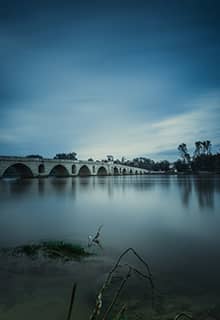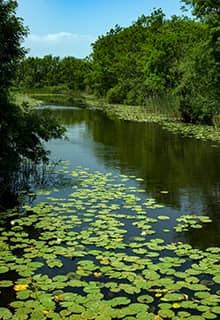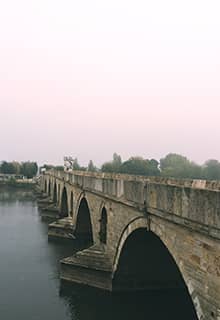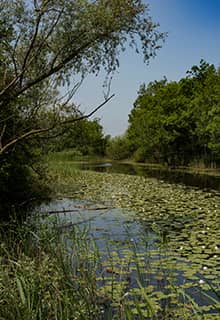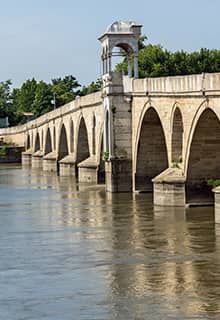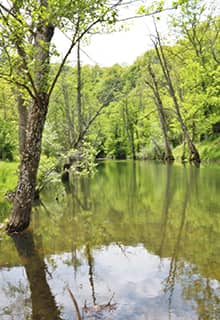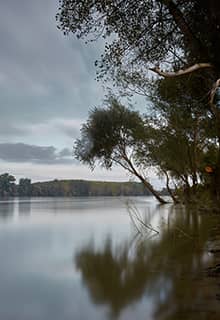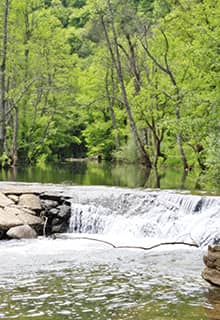

rivers Marmara
Türkiye
The Marmara Region has a varied topography, with a wide variety of landscapes, enabling visitors to find something to suit all tastes. The area is characterised by a central plain surrounded by mountains, making it unique amongst Türkiye’s six geographical regions.
With a mild climate throughout the year, the area offers a range of leisure and scenic activities for nature lovers. Visitors can choose from lakes and rivers, parks and mountains.
- There are four natural lakes: Ulubat, Manyas, Sapanca and İznik.
- Five rivers dominate the region; the most well-known is the Meriç.
Meriç River
The River Meriç, or Maritsa in Bulgarian, is 490 km long out of which 211 km are in Türkiye. The river rises in Bulgaria, crosses the border in Türkiye and passes through Edirne, joins with Tunca river, defines the Turkish-Greek border, and finally empties into the Aegean Sea at Saros Gulf. Its tributaries are Ergene, Arda and Tunca rivers.
Edirne, at one time the Capital City of the Ottoman Empire is the most important city on the course of the River Meriç. In the 18th century, it was one of the seven largest cities in Europe. Set on a verdant plain of poplar trees near the junction of the Tunca and Meriç rivers, this graceful historic city welcomes visitors. As you drive around the area, you will spot many lovely Ottoman bridges gracing the Tunca and Meriç rivers as they make their way to İstanbul and other points east. On the way to the Saroz Gulf in the Aegean Sea, you can stop at Uzunköprü to see an interesting bridge built by Murat II in 1444 spanning the Ergene River. Its 174 arches make up its 1392-m length.
Sakarya River
After the Euphrates and Kızılırmak Rivers, the Sakarya River is Türkiye's third longest river. It is located in north western Anatolia. The river takes its name from the river god Sangarius in Greek Mythology.
Its length is 824 km, the width of the feeding basin is 58,160 km², and the annual precipitation amount to the basin is 31,057 billion m3. The average annual precipitation in the Sakarya basin is 524.7 mm/m² and the average annual temperature is 14.5 C. The Sakarya basin of 58,160 km², comprises 7.5% of Türkiye's whole size. The width of the river varies between 60-150 m. In the river basin, agricultural lands are 43.8%, meadow and pasture areas are 19.6%, forests and shrubs are 28.7%, vacant areas are 2%, settlement area is 1.6%, and water covered areas are 1.5%.
It rises from the plateaus in the northeast of Afyon province, passes nearby Polatlı town and Adapazarı (Sakarya) province, joins with its tributaries; the Porsuk, Göksu, Göynük, Aladag, Kirmir, Mudurnu and Çark Rivers, and finally empties into the Black Sea. There are two hydroelectric power plants on the Sakarya river: Sariyar (built between 1950-1956) and Gökçekaya (1967-1972) dams.
Sakarya is a city of the province with the same name. It is located on the coast of the Black Sea. The River Sakarya flows through this beautiful location. The river creates a web of estuaries in the province and the natural beauty is breath-taking. If you want to be amidst nature, history, serenity and comfort, Sakarya is the place to be.
The Justinian Bridge is a 429m long, eight-arched bridge. Constructed on the River Sakarya (then called Sangarius) in 553 by the Byzantine Emperor Justinian, it is of great interest to visitors. This construction transports you back to Byzantine days. You have to imagine the workmanship and skill involved that have kept it strong until the present day.
The Ali Fuat Paşa Bridge, connecting Geyve centre to Ali Fuat Paşa town, is also known as Sakarya Bridge and was built in 1495 by Sultan Bayazit II.
Porsuk River
A popular spot in Eskişehir is the Porsuk River (a tributary of the Sakarya) and its environs, where you can have a tour of the river by boat or relax in one of the cafés alongside the river.
Bilecik
Bilecik, a town of 30,000 inhabitants, is the capital of Türkiye's Bilecik province. The town of Bilecik is located along the Karasu River, which is a tributary of the Sakarya River. The province as a whole has a population of 195,000 and lies in a fertile river valley. Parts of it are in the highlands made up of several plateaux, which are attractive tourist sites.

